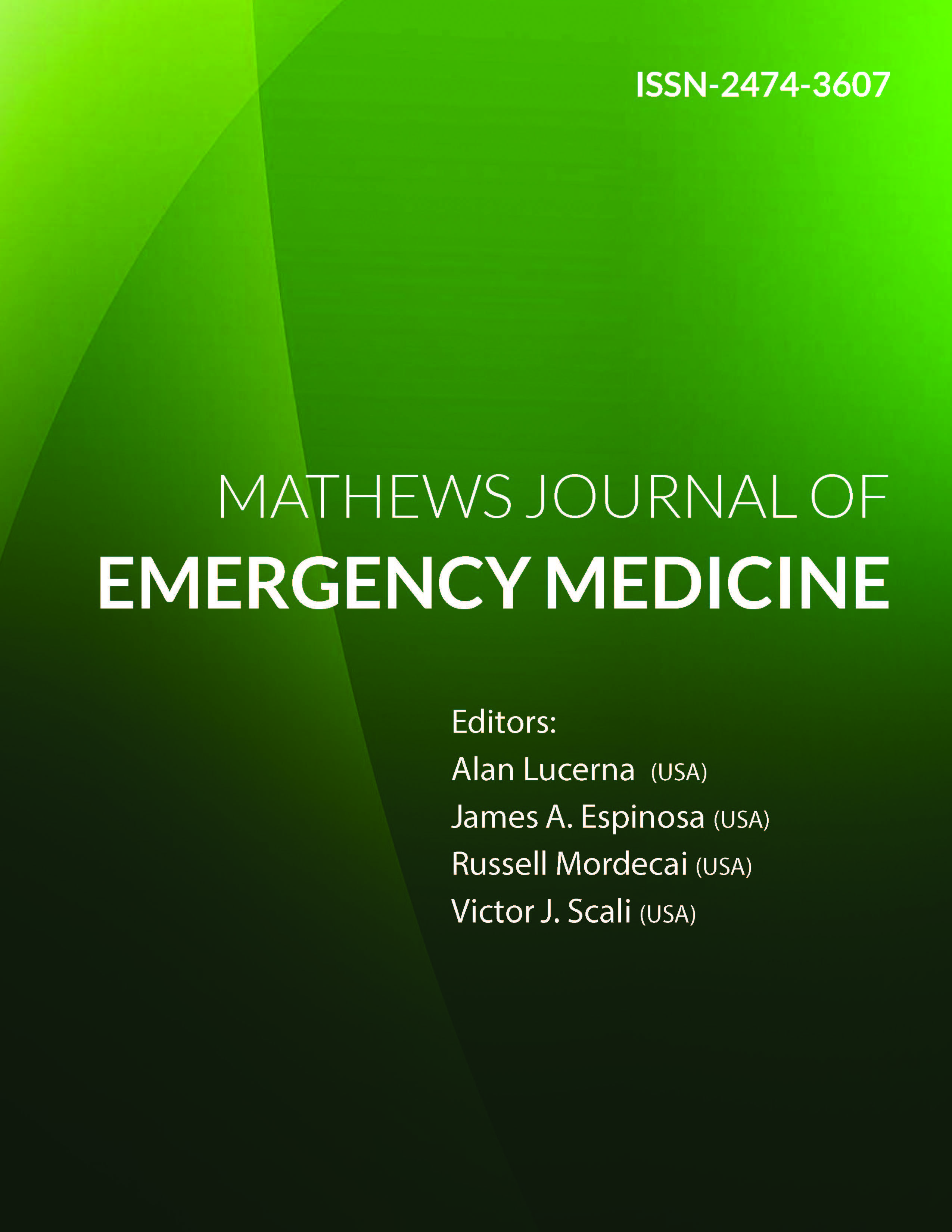
Information Links
Previous Issues Volume 8, Issue 4 - 2023
Which Bladder Filling Method for Pelvic Ultrasound is best? A Comparison Study of Three Standard Non-Foley-Catheter-Based Bladder Filling Methods (Oral, Intravenous, Oral/IV) in Preparation for Pelvic (Transabdominal) Ultrasound
Amelia Servin1, Amber McPherson2, James Espinosa3,*, Victor Scali4, Alan Lucerna5, Henny Schuitema6
1Department of Emergency Medicine, Providence Centralia Hospital, Centralia, WA, USA
2Department of Emergency Medicine, Willamette Valley Medical Center, McMinnville, OR, USA
3Department of Emergency Medicine, Jefferson NJ, Stratford, NJ, USA
4Director of Problem-Based Learning and Faculty, Rowan-Virtua SOM School of Medicine, Stratford, NJ, USA
5Program Director, Emergency Medicine Residency Program, Jefferson Health-New Jersey Stratford, NJ, USA
6Chief, Department of Emergency Medicine and Associate Chief Medical Officer, Jefferson NJ, USA
*Corresponding Author: James Espinosa MD, Department of Emergency Medicine, Jefferson Health NJ, 18 East Laurel Road, Stratford, NJ 08084; Email: [email protected]
Received Date: June 20, 2023
Publication Date: July 7, 2023
Citation: Servin A, McPherson A, Espinosa J, Scali V, Lucerna A, Schuitema H. (2023). Which Bladder Filling Method for Pelvic Ultrasound is best? A Comparison Study of Three Standard Non-Foley-Catheter-Based Bladder Filling Methods (Oral, Intravenous, Oral/IV) in Preparation for Pelvic (Transabdominal) Ultrasound. Mathews J Emergency Med. 8(4):61.
Copyright: Servin A, et al. © (2023)
ABSTRACT
Background: Pelvic ultrasound is generally performed in two parts, transabdominal ultrasound and transvaginal ultrasound. In order to obtain the best images and the greatest chance at a diagnosis, the consensus appears to be that patients must have a full bladder prior to undergoing pelvic ultrasound. A commonly used operational definition of a full bladder is 250 to 300 cc. Patients can be given fluids by mouth, or intravenously (as an IV bolus). Both approaches can be used. Some scenarios (nausea, pre-operative status, etc) may favor one approach over another. It is also possible to fill the bladder with a Foley catheter which remains in place for the duration of the study. Materials and Methods/Research Design and Methods: The purpose of this study was to determine which of the current non-Foley catheter-based methods of bladder-filling (IV bolus, oral fluid intake, or a combination of both) most rapidly produces an adequately filled (> 250 cc) bladder volume for pelvic ultrasound. The setting was three community hospital/university-affiliated emergency departments.
The design was prospective with subjects randomly assigned to one of three treatment groups: 1) 1,000 cc normal saline bolus administered IV over 1 hour, 2) Oral ingestion of 32 ounces water (with ice in cup) with or without added flavoring (e.g. Crystal Light) per patient preference 3) Bladder to be filled through combination of the above methods performed simultaneously (i.e. 1L NS IVF bolus and 32 oz. water). Results: The fastest filling was with the oral route. The slowest was with the IV route. The difference in filling (in the direction of faster filling) was highly statistically significant in reference to the oral vs. the IV route. (p=0.001) There was no statistical significance in reference to the comparison of the combined route (IV/PO) vs oral or IV, and hence no advantage seen for the combined routes in reference to filling speed. The greatest change in volume was seen with the oral route and the slowest was with the IV route. The oral route showed a statistically significant difference, in the direction of a larger filling delta, with oral route in comparison to both the IV route (p=0.001) as well as in comparison to the combined (IV/PO) route (p=0.03). There was no statistically significant difference noted in comparison of the various routes in reference to time to US. Discussion: The fastest filling was with the oral route. The slowest was with the IV route. There was no statistically significant difference noted in comparison of the various routes in reference to time to ultrasound. Time to ultrasound is affected by system properties that are more complex than time to filling. Conclusions: The fastest filling was with the oral route. The slowest was with the IV route. There was no statistically significant difference noted in comparison of the various routes in reference to time to ultrasound. Time to ultrasound is affected by system properties that are more complex than time to filling. Future research might show the advantage of optimizing ultrasound cycle time by coordinating ultrasound acquisition in the ED setting with a full bladder.
Keywords: Pelvic ultrasound; Bladder filling method; Bladder volume; Transabdominal ultrasound